‘We built a jetty and nature took over’
Busselton’s 1.8km-long landmark jetty has a stunning sculpture exhibition and it’s underwater.
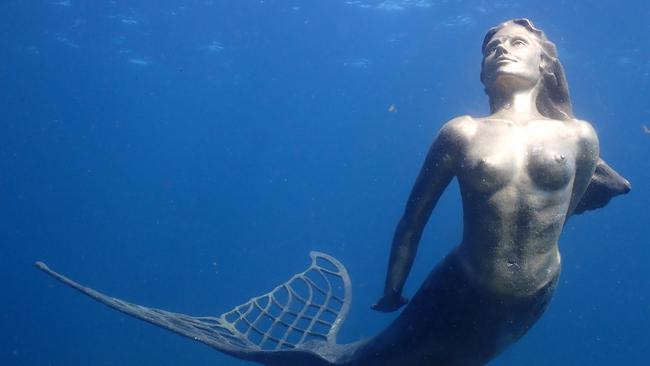
I’m peering into the water from Busselton’s famously long timber jetty. The ocean surface has a light chop today, and I can’t see the bottom, but the laminated map attached to my wrist says I’m in the right place. Adjusting my snorkel mask, I step into the blue.
The water is less than 8m deep here, and a shadowy shape indicates I’m above the first underwater artwork. Sucking in a breath, I plunge down for a closer inspection of the Diver’s Helmet, a steel sculpture by Perth artist Gavin Cochrane.
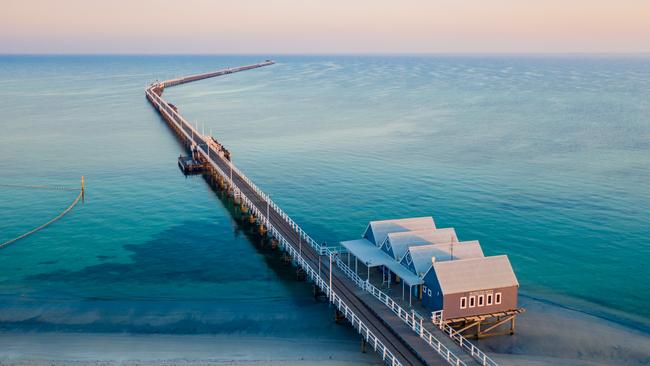
The old-school diver’s helmet is 3m tall and its dome comprises 600 metal triangles. The hard surfaces are already becoming fuzzy with algae, while a school of tiny fish are darting in and out of the hollow centre.
It’s one of 13 new underwater sculptures beneath Busselton Jetty, 2½ hours south of Perth, part of a self-guided snorkel and dive trail installed in July.
The works are by 12 artists from the southwest made using materials such as steel, bronze, ceramic and concrete.
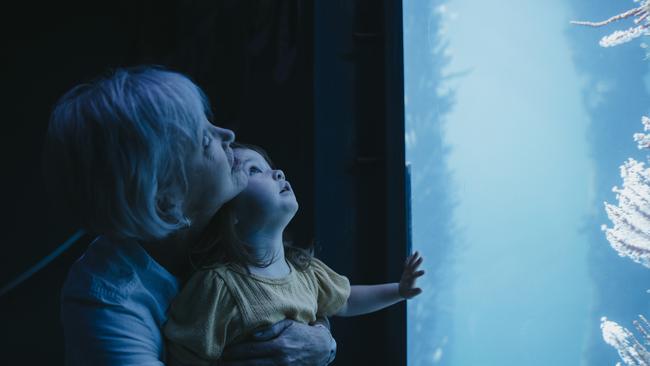
Continuing my watery treasure hunt, I fin over to discover the Bronze Mermaid arching her graceful torso upwards from the seafloor.
There’s also a seahorse, an octopus and a 10m-long steel whale. Finally, I’m awestruck by Stella the Stingray, which has a 7m body composed of 1300 steel pipes, likely to soon be inhabited by octopuses, moray eels and shrimp.
Historic Busselton Jetty is 1.8km long, the longest timber-piled jetty in the southern hemisphere. While these days it’s used only for recreation, it was once a vital trade link for the timber, agriculture and coal industries in the region.
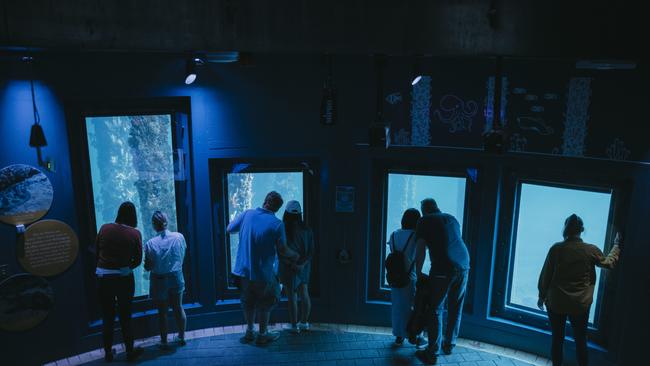
The first jetty of 176m was completed in 1865, but Geographe Bay’s shallow sea floor meant many extensions were needed to access deeper waters. In 1911, a “skeleton jetty” was added, an extra arm that met the mainland 166m east of the original jetty head. This addition was used for steam trains, and joined the main jetty halfway.
In 1978, when the jetty was no longer being used for shipping, cyclone Alby struck, destroying the first 700m of the oldest section.
Authorities sought to demolish the structure entirely, a proposal that galvanised the community into lobbying and fundraising action and, finally, it was acquired by the City of Busselton and duly restored.
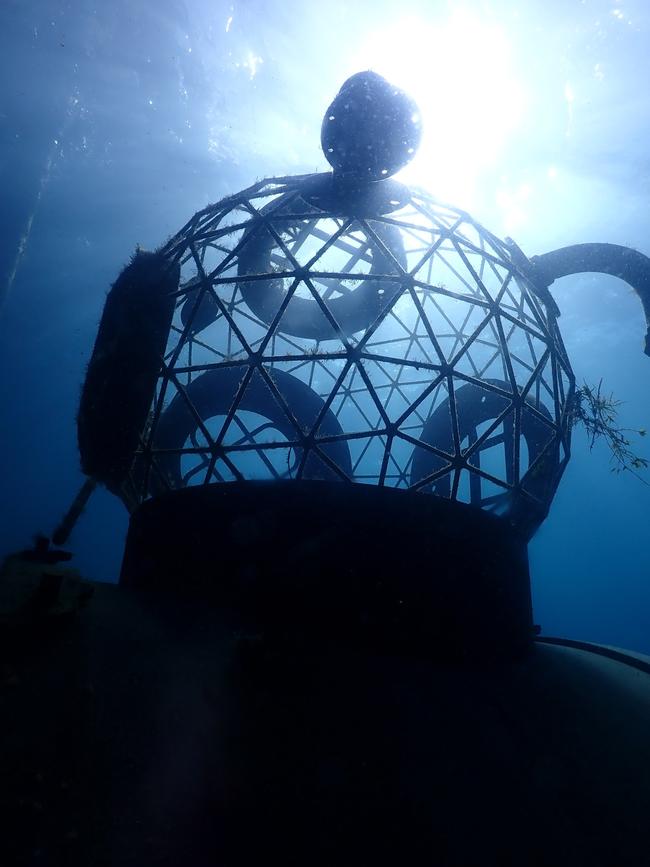
Busselton Jetty Inc is a not-for-profit organisation tasked with the jetty’s daily operation. Amy Gornall, chief operating officer, explains that ultimately, the locals still own the landmark, and it’s a cherished piece of their history. “Almost everyone has a story that they love about the jetty,” Amy says.
Ticket sales contribute to its maintenance, and also fund the Busselton Jetty Environment Foundation, which facilitates research, conservation and education. The organisation is certified by Ecotourism Australia as an Advanced Ecotourism Operator, acknowledging its sustainable credentials.
On the day of my visit, a few exercise enthusiasts are braving the 3.6km return walk along the jetty, but I’m joining the majority of sightseers, taking a seat in the cute solar-powered train. Departing the station, we listen to recorded commentary of Wadandi Aboriginal and European history of the area, and the jetty itself.
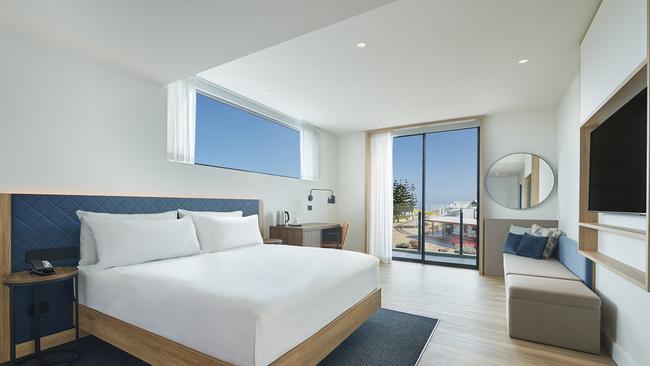
We trundle along, passing seagulls nesting on disused pylons, and Australian gannets plunging into the sea. A couple of dolphins are spotted, and although we don’t see any today, there are often seals, and even whales during their migration.
Disembarking at the far end, I’m viewing the underwater life again, but this time staying dry. Created in 2003, the observatory is not to be confused with an aquarium. This remarkable viewing pod is a window on to nature, 8m below the surface.
As we descend the curved staircase deep below the jetty, guide Kerry Linham talks us through the marine life clinging to the jetty pylons, visible through the reinforced glass. “There are over 100 species of invertebrates colonising these pylons,” she says. “They’re the basis of the food chain.”
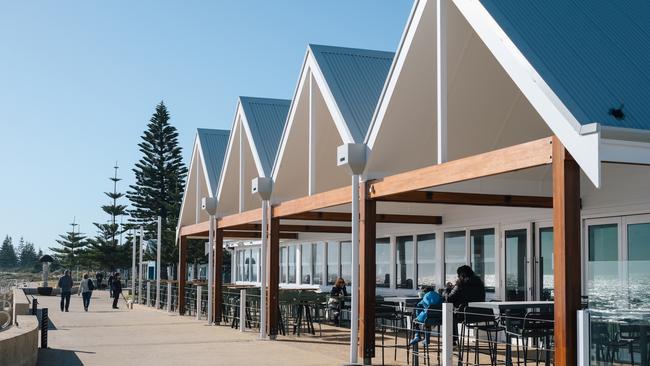
Through these windows, I’m privy to a secret world. Fluffy white soft corals billow in gentle currents, and sponges abound in yellow, blue and orange.
A school of hula fish is wriggling around, and stripy old wife fish weave between the structures. A puffer fish spots me through the glass and makes a hasty retreat. It’s mesmerising.
The jetty itself, along with the 13 new sculptures, actually forms a giant artificial reef. But some, including Kerry, bristle at the term “artificial”, preferring to think of the jetty as a celebration of Indian Ocean marine life. “We built a jetty, and nature came along and took over,” she says.
In the know
Busselton Jetty offers walking day passes (adults $4), return train rides (adults $16, children $10) and Underwater Observatory tours (adults $38, children $23).
Snorkelling or diving the sculpture trail is available on a self-guided basis, or book a snorkel ($89) or dive tour (from $99) through Swan Dive.
Just add
The Goose Restaurant
Beside the jetty and offering spectacular views of Geographe Bay is all-day venue the Goose. Having operated for 18 years, the building was destroyed by fire in 2021, and the rebuilt venue reopened in July, featuring indoor and al fresco dining, a dedicated bar and a takeaway window.
Expect light timber and oodles of natural light, giving the place a fresh, casual vibe. The kitchen is centred on a wood-fired grill and has share plates, local beef brisket and woodfired pizzas on 48-hour cultured sourdough.
Choose from Margaret River wines, cocktails, and craft beer from Shelter Brewery across the lawn.
Hilton Garden Inn
Right behind the Goose, the newest addition to Busselton’s foreshore is set to be unveiled this month. The Hilton Garden Inn will offer 110 rooms, seven of which are wheelchair accessible.
Rooms on the northern side will have sweeping views of the bay and jetty. A 60-person restaurant will be open to guests and the public, as will the bar area that spills out to a terrace.
The heated outdoor swimming pool is overlooked by a 24-hour gym. The hotel’s crowning glory is up on the fourth floor – a 150-person event hall that offers a bird’s-eye view of the ocean.
Carolyn Beasley was a guest of Busselton Jetty Inc and Tourism Western Australia.


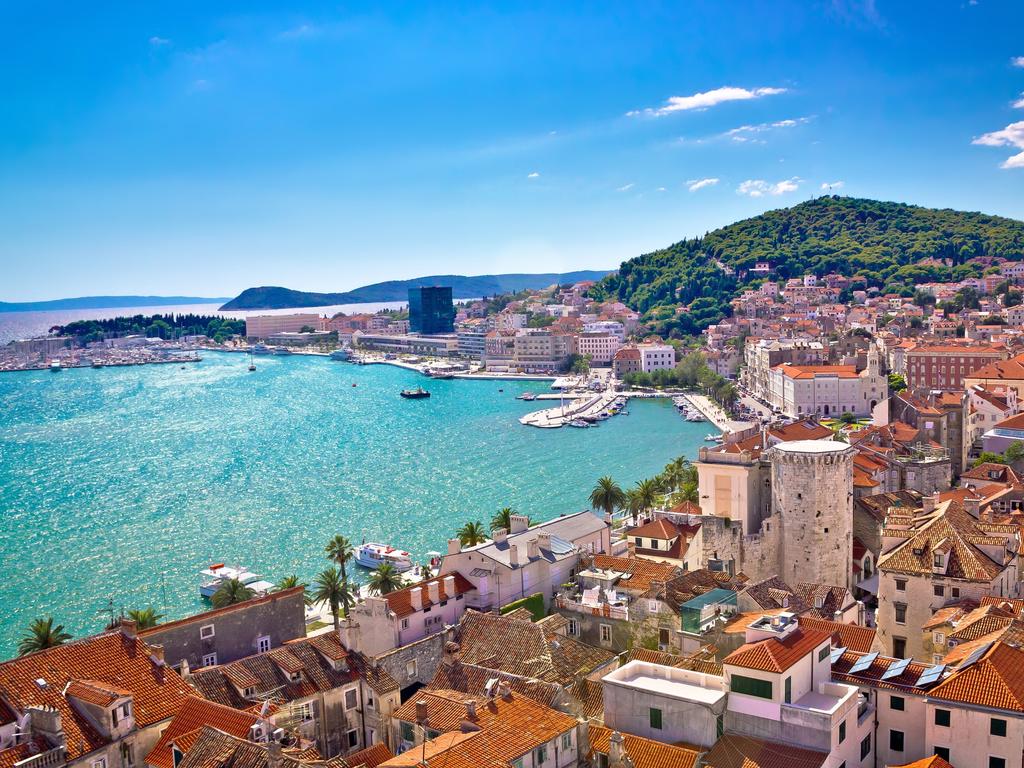

To join the conversation, please log in. Don't have an account? Register
Join the conversation, you are commenting as Logout